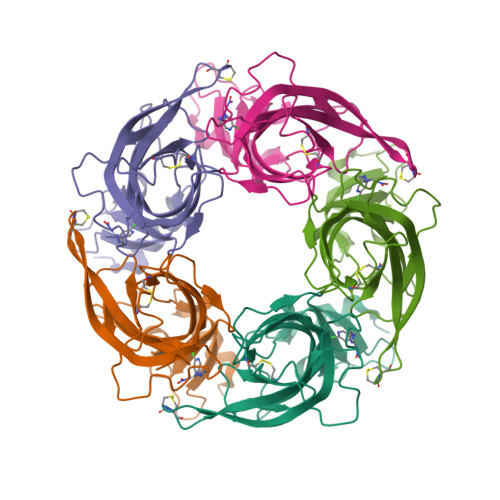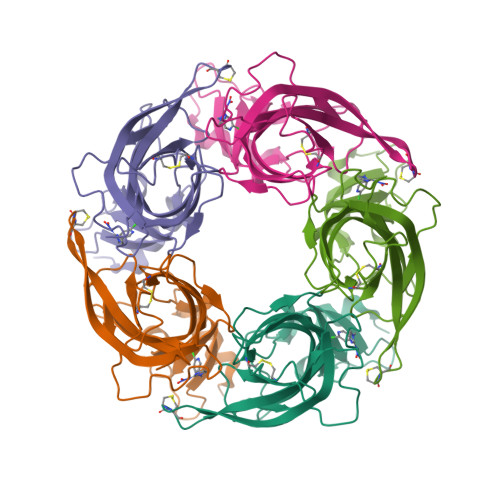Crystal structures of Lymnaea stagnalis AChBP in complex with neonicotinoid insecticides imidacloprid and clothianidin
Ihara, M., Okajima, T., Yamashita, A., Oda, T., Hirata, K., Nishiwaki, H., Morimoto, T., Akamatsu, M., Ashikawa, Y., Kuroda, S., Mega, R., Kuramitsu, S., Sattelle, D.B., Matsuda, K.(2008) Invert Neurosci 8: 71-81
- PubMed: 18338186
- DOI: https://doi.org/10.1007/s10158-008-0069-3
- Primary Citation of Related Structures:
2ZJU, 2ZJV - PubMed Abstract:
Neonicotinoid insecticides, which act on nicotinic acetylcholine receptors (nAChRs) in a variety of ways, have extremely low mammalian toxicity, yet the molecular basis of such actions is poorly understood. To elucidate the molecular basis for nAChR-neonicotinoid interactions, a surrogate protein, acetylcholine binding protein from Lymnaea stagnalis (Ls-AChBP) was crystallized in complex with neonicotinoid insecticides imidacloprid (IMI) or clothianidin (CTD). The crystal structures suggested that the guanidine moiety of IMI and CTD stacks with Tyr185, while the nitro group of IMI but not of CTD makes a hydrogen bond with Gln55. IMI showed higher binding affinity for Ls-AChBP than that of CTD, consistent with weaker CH-pi interactions in the Ls-AChBP-CTD complex than in the Ls-AChBP-IMI complex and the lack of the nitro group-Gln55 hydrogen bond in CTD. Yet, the NH at position 1 of CTD makes a hydrogen bond with the backbone carbonyl of Trp143, offering an explanation for the diverse actions of neonicotinoids on nAChRs.
Organizational Affiliation:
RIKEN SPring-8 Center, 1-1-1 Kouto, Sayo, Hyogo 679-5148, Japan.



















